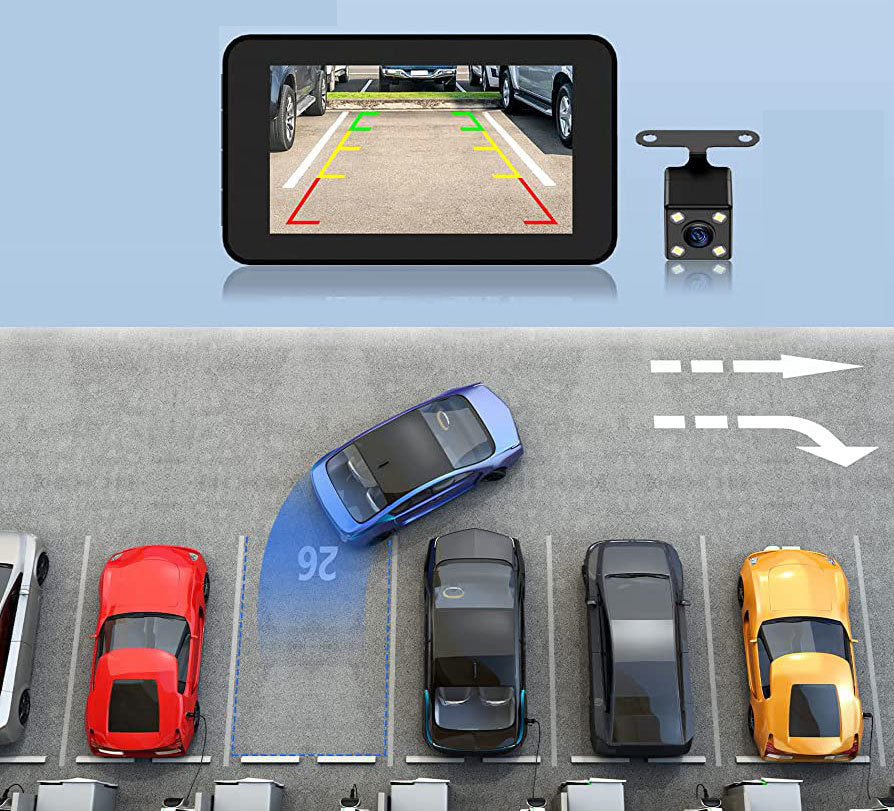
Loop recording in a dashcam explained
, by Allcam dashcams, 4 min reading time

, by Allcam dashcams, 4 min reading time
Every dashcam has it and it is perhaps the one feature that sets a dashcam apart from other cameras; Loop recording. Loop recording ensures that the oldest video files are automatically deleted to make room for new recordings. This ensures that the last recorded videos are always stored on the SD card.

A dashcam is used by most people for security while driving or parking. In case of damage in an accident or at the hands of vandalism, the dashcam gives you valuable evidence to prove exactly what happened. 99.9% of the time fortunately nothing happens, yet the dashcam is recording and keeping an eye on you all the time. Of course, should an incident occur, you want it to have been captured by the dashcam and saved to the SD card. This is what Loop recording takes care of.

The working mechanism behind Loop recording is actually quite simple; instead of one long fragment, the dashcam saves shorter fragments of one or several minutes. The files fit together exactly so you can play them back later in succession. When the SD card is full, the oldest file is automatically deleted to make room for a new file. This way, the last recorded images are always on the SD card. The total recorded time depends on the capacity of the SD card. The rule of thumb is that with 16gb, around 2.5 hours of Full HD videos can be stored.
The standard set length of clips is usually 3 or 5 minutes but many dashcams also allow you to change this to 1 or 10 minutes. A one-hour drive can therefore consist of up to 60 files, depending on the setting.

Because the videos are stored in shorter files, they are easy and quick to download. If the dashcam were to record one long video, downloading would take a huge amount of time. Especially with dashcams with Wi-Fi on which you can download and share the files wirelessly, this would be very inconvenient.
Another additional advantage of Loop recording is that it creates a clear overview of recorded fragments, along with the time and date they were recorded. This makes retrieving a video a lot easier than if you had to search through one long video.
You don't want some files to be deleted. Something noteworthy might happen on the road or you might get involved in an incident yourself. In either case, a dashcam has the ability to protect files so they are not overwritten.
Automatic through G-sensor

Every dashcam has a built-in G-sensor. A G-sensor is a sensor that detects vibrations and therefore notices when a collision occurs. When the vibrations exceed a certain limit (the sensitivity can be set), the G-sensor prevents the current video from being deleted and overwritten automatically.
Manual with S.O.S. button

Besides the G-sensor, most dashcams also have an S.O.S. button on the dashcam itself or as a separate button with Bluetooth (Vantrue E2). One press of this button stops the current video from being automatically deleted and overwritten. Should you see something remarkable happen, this button ensures that the file is saved.
Saving the protected files to the SD card works differently for each dashcam brand and model. Most dashcams create separate folders on the SD card such as ‘Event’ or ‘Emergency’ where these files are placed. In other cases, the separate files are individually protected against deletion. In this case, they can be recognised by the lock that appears with the thumbnails on the computer or dashcam.

Most dashcams also have the option to turn off Loop recording. Disabling Loop recording can be desirable when, for example, you want to capture a nice drive on holiday. It would be a shame if part of the trip was accidentally deleted by the loop recording. If Loop recording is turned off and the SD card is full, the dashcam stops recording and displays a message indicating that the card is full. The files can then possibly be transferred to a computer to empty the card again.
It is obvious to think that a dashcam with Loop recording turned off will record one long video instead of individual fragments, however this is usually not the case. Many dashcams still save footage in fragments of around 20 minutes for security purposes. This is partly due to speed of the dashcam and the SD card. Saving one long fragment takes a lot of computing speed and many dashcams and SD cards often cannot handle that.
Moreover, waiting to save until the last moment is not without risk. After all, who hasn't ever forgotten to save a piece of work on the computer in between, only to see that same computer suddenly switched off a moment later? With a dashcam, it is difficult to repeat the route you drove.


